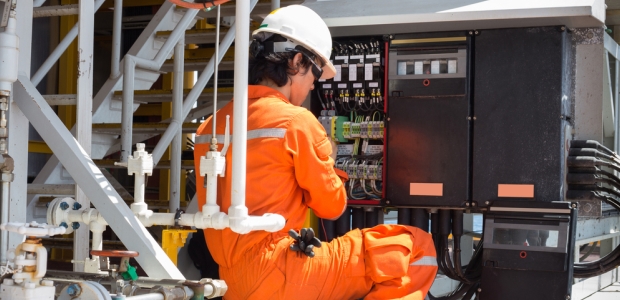
In the UK, generators or the mains are commonly used to supply electricity to workplaces. A generator typically operates at 120 or 240 volts, with the mains running at 230 volts; however, larger generators may operate at greater voltages.
Alternating Current (AC) with a frequency of 50 Hz (50 hertz) is the standard in the UK. This indicates that the direction of the current switches 50 times each second. Due to the fact that alternating current changes direction so frequently, any muscles that are activated by the electrical current tend to remain so. This means that you could be unable to let go if you have touched the current by grasping a tool, door handle, or wire, making it significantly more harmful than direct current.
Long-term exposure raises the risk of death and can have more severe effects than a brief shock, including burns, deep tissue damage, nervous system damage, and damaged muscles and ligaments. A quick jolt across your chest and heart can be fatal (from muscle contraction).
Understand
The first step in preventing electrical accidents is to ensure that everyone in the workplace understands the significant risk that electricity poses. It is easy to underestimate the danger of electricity due to its pervasive nature throughout our society, everything from lighting, communication, entertainment and work equipment is powered by electricity, and sometimes even our vehicles.
It’s everywhere, and typically contained in a safe manner, so it’s easy to forget how dangerous it is.
Every employee in your office needs to be aware of the risks associated with electricity and the locations where there may be a chance they could come into contact with electrical systems. This calls for an analysis of your electrical usage and any potential areas where workers might come into contact with live current. Analysing electrical equipment, lighting systems, IT equipment, and work processes are a few examples.
Identify who may come into contact with electrical current and educate them on the steps that they need to take to be safe.
Any contractors working on your property must be aware of the location of any electrical systems, how to keep themselves safe while working, and how you intend to ensure that they can do so safely.
Isolate
Make sure everybody who might come in contact with electrical current is aware of how to isolate the current and turn the system off. This is crucial for individuals performing maintenance because working with live equipment, especially that which has moving parts, can put them both in danger of shock and of becoming live and moving.
Work while systems are dead
It is always preferable to carry out works while the system that you are working on is not live.
Lock off
Higher currents and higher risk equipment have to be ‘locked off’.
Locking off is the technique of ensuring that electrical systems are not deliberately or accidentally reactivated. This strategy involves utilising two or more locks and key holders to ensure that reactivating equipment requires multiple individuals.
What are the most common electrical hazards?
There are numerous risks that are prevalent in the workplace, some of which are more prominent than others:
- Improperly installed electrical equipment
- Faulty wiring
- Incorrect use of replacement fuses
- Overheating equipment
- Continued use of frayed/loose cables
- Overloaded outlets or extension cords
If it sounds like there are a lot of hazards, that is because there are. All of the aforementioned factors have the potential to produce severe harm that could lead to permanently disabling injuries like loss of muscular control, heat burns, electrical burns, and—most notably—electric shock.
How can you minimise the risk of working with electricity?
Be wary of water
Make sure that all liquids are aware from cables and plug sockets – an accidental spillage can cause a major trip in all the circuitry attached.
Circuit protection
Circuit protection products such as fuses and circuit breakers are designed to break the flow of an electrical current in a circuit.
Grounding
Safety grounding is a conductive path to earth that is made to protect people from malfunction-caused electric shock.
Guarding
Electrical components operating at 50 volts or more must be guarded with covers/barriers to keep from contact by workers and conductive tools.
Extension cord safety
Avoid connecting too many appliances to extension cords since this can lead to overheating and, ultimately, fires. Additionally, maintain cables untangled to prevent fraying and exposed wires, which can happen when connections are stressed.
Explore our health and safety courses
Develop your knowledge of electrical safety and keep yourself and your peers safe with our health and safety courses. We cover hazard prevention, fire safety and general health and safety for workers, supervisors and managers alike. Our most popular and useful courses include:
- IOSH Managing Safely – Online Course
- NEBOSH National General Certificate – Online Course
- NEBOSH Certificate in Fire Safety – Online Course